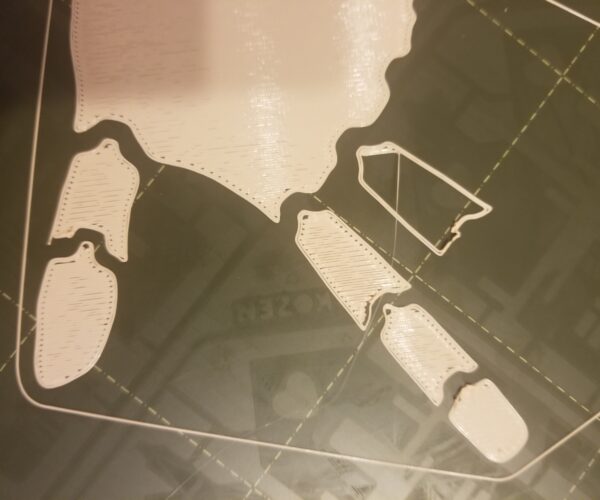Help me understand how I warped steel sheet
I've been calibrating my printer after some bad bed adhesion issues last year. Put it on hold for a couple months. I finally got some smaller parts to print well and a good first layer, but I was using 3Dfuel PLA+ and Prusament PLA for calibration.
I switched to this 3dfuel warm bisque standard PLA and tried printing this hand flexi again and got what you see in the attached picture. The last time I printed this I used 3df grass green pla+. I messed with temps and tried to print a few more times, all fails.
I have two printers, the other is printing PETG. I have 2 smooth sheets and 2 textured. I hadnt gotten around to repairing my petg printer, and I looked at it and had an idea. It had the smooth sheet on the bed, so I decided to take the petg printers smooth sheet, wash it with soap water, and pop it on the pla printed to give her another go. Didn't calibrate z or anything. Just went to printing. First layer came out pristine. No
This tells me there is enough warping on the center of my first steel sheet, which I suspected but I never straight edged it to check as I don't have one. This proves there's a warp to me.
So why/how did this warp happen to my steel sheet? I want to wrap my head around this stuff so I can avoid this from happening again.
RE:
Hi Boney,
I am not sure I understood your story.
On my mk3 I have 8 sheets 4 smooth and 4 textured and per group I callibrate for different filaments I am using. So even PLAs do not adhere same way.
even an old man can learn new things 🙂
Standard I3 mk3s, MMU2S, Prusa Enclosure, Fusion 360, PrusaSlicer, Windows 10
PRUSA MINI+ Prusalink + Prusa Connect
RE: Help me understand how I warped steel sheet
If it is warped, did you remove a print while still warm? Did you print PC Blend (not listed above)?
--------------------
Chuck H
3D Printer Review Blog
RE:
Warping is a reality of any material that's exposed to heat and cold and it's why you have a Pinda probe that scans your bed to find high and low spots before your fist layer is put down. Do you use the 3x3 scan pattern or 7x7? I ask because what you're seeing might be explained by two points of the 3x3 being high points where there is a dip in between. The printer creates a mathematical mesh where it averages out the level between two measured points, if those points are high with a dip in between you'll see what you're seeing. If you go 7x7 you're mesh will be more accurate.
I can see that you've printed Kozen gingerbread houses for Christmas, I'm wondering how clean your bed is, that'll have an impact as well.
Cheers
-Bob
Prusa I3 Mk2 kit upgraded to Mk2.5s, Ender3 with many mods, Prusa Mini kit with Bondtech heat break, Prusa I3 Mk3s+ kit
